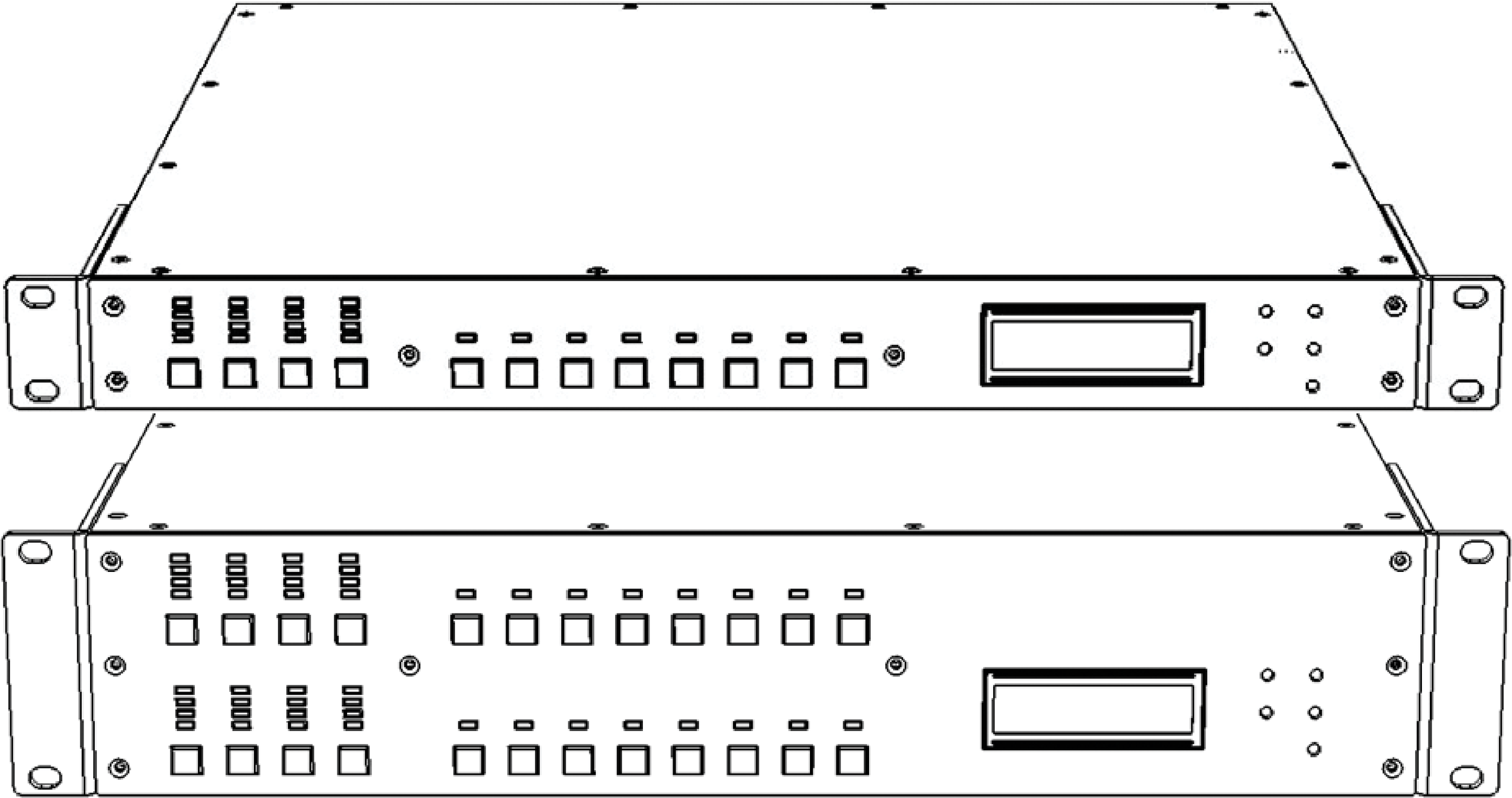Datasheet — Acheron Studio
Screen channel loudspeaker


Acheron® Studio Loudspeaker and Dimensions
At the heart of Meyer Sound’s EXP line of cinema products are the Acheron™ high-performance screen channel loudspeakers. The Acheron Studio is a compact version of the Acheron 80, making it ideal for small theaters, re-recording stages, and postproduction facilities. Optimized for installation behind perforated screens, the two-way loudspeaker combines the advantages of self-powered technology and innovative horn design to deliver exceptional, precise coverage for the left, center, and right sound channels for cinema. Offering the same 38 Hz to 17 kHz frequency response as the Acheron 80, as well as a generous peak output with very low distortion, the Acheron Studio stands up to the most demanding of digital soundtracks, maintaining a wide dynamic range and full fidelity.
The Acheron Studio uses the same patented horn technology originally developed for the Acheron 80. Designed specifically for cinema use, the horn features a very soft roll-off outside its extremely well-behaved 80° horizontal by 50° vertical coverage pattern. The horn is fixed within the enclosure to ensure an accurate acoustic crossover, phase response, and incredibly consistent vertical pattern. The 580 Hz crossover point places most of the dialog in the horn, which is ideal for cinema applications.
Designed and manufactured at Meyer Sound’s headquarters in Berkeley, California, the Acheron Studio’s drivers include one 15-inch low-frequency cone driver and one 4-inch high-frequency diaphragm compression driver. Both drivers yield uncompromising quality and full bandwidth and are powered by sophisticated onboard amplification. The proprietary Meyer Sound power amplifier is a two-channel, class AB/bridged amplifier with complementary MOSFET output stages that yields a total output of 700 W. Built-in signal processing includes electronic crossover and correction filters—to achieve a flat phase and frequency response—along with driver protection circuitry. The self-powered design not only ensures consistent results but also simplifies installation in both new and existing rooms.
The optional RMS™ remote monitoring system provides comprehensive monitoring of loudspeaker parameters from a Mac® or Windows®-based computer running Compass® Control Software.
Constructed of premium multi-ply birch, the Acheron Studio enclosure is coated with a slightly textured black finish. An optional version of the loudspeaker is available with side rigging attachment points and the MYA-AST mounting yoke.
Features and Benefits
High peak power output with ultra-low distortion
Exceptional fidelity and extended high-frequency performance
Constant-Q horn that yields uniform response throughout coverage area
Extraordinarily flat amplitude and phase response for tonal accuracy
Seamless integration with HMS surround loudspeakers, X-400C and X-800C cinema subwoofers, and some ULTRA family loudspeakers
Applications
Mid-size theaters
Custom, private theaters
Re-recording stages
Theatrical and home entertainment mix facilities
Accessories and Associated Products
Acheron with MYA-AST Yoke — An optional version of the Acheron Studio with side rigging attachment points and the MYA-AST mounting yoke.
 |
Acheron with MYA-AST Yoke
Galileo GALAXY Network Platform — The Galileo GALAXY Network Platform provides state-of-the-art audio control technology for loudspeaker systems with multiple zones. With immaculate sonic performance, it provides a powerful tool set for corrective room equalization and creative fine-tuning for a full range of applications.
 |
GALAXY Network Platform
Specifications
ACOUSTICAL1 | |
|---|---|
Operating Frequency Range2 | 37 Hz – 18 kHz |
Frequency Response3 | 38 Hz – 17 kHz ±4 dB |
Phase Response | 700 Hz – 17 kHz ±30° |
Linear Peak SPL4 | 131.5 dB with crest factor >15 dB (M-noise), 131.5 dB (Pink noise), 133.5 (B-noise) |
COVERAGE | |
Horizontal Coverage | 80° |
Vertical Coverage | 50° |
TRANSDUCERS | |
Low Frequency | One 15-inch cone driver; 2 Ω nominal impedance |
High Frequency | One 4-inch diaphragm compression driver; 8 Ω nominal impedance |
AUDIO INPUT | |
Type | Differential, electronically balanced |
Maximum Common Mode Range | ±15 V DC, clamped to earth for voltage transient protection |
Connectors | XLR 3-pin female input with male loop output; optional XLR 5-pin connector to accommodate both balanced audio and RMS signals. |
Input Impedance | 10 kΩ differential between pins 2 and 3 |
Wiring5 | Pin 1: Chassis/earth through 220 kΩ, 1000 pF, 15 V clamp network to provide virtual ground lift at audio frequencies Pin 2: Signal + Pin 3: Signal – Pin 4: RMS (polarity insensitive) Pin 5: RMS (polarity insensitive) Case: Earth ground and chassis |
Nominal Input Sensitivity | 0 dBV (1.0 V rms) continuous is typically the onset of limiting for noise and music |
Input Level | Audio source must be capable of producing of +20 dBV (10 V rms) into 600 Ω to produce the maximum peak SPL over the operating bandwidth of the loudspeaker. |
AMPLIFIER | |
Type | Two-channel complementary MOSFET output stages (class AB/bridged) |
Total Output Power6 | 700 W peak |
THD, IM, TIM | < 0.02% |
Cooling | Convection |
AC POWER | |
Connector | PowerCON 20 input with loop output |
Automatic Voltage Selection | 90–265 V AC |
Safety Rated Voltage Range | 100–240 V AC, 50–60 Hz |
Turn-on and Turn-off Points | 90 V AC turn-on, no turn-off; internal fuse-protection above 265 V AC |
CURRENT DRAW | |
Idle Current | 0.340 A rms (115 V AC); 0.227 A rms (230 V AC); 0.387 A rms (100 V AC) |
Maximum Long-Term Continuous Current (>10 sec) | 2.2 A rms (115 V AC); 1.1 A rms (230 V AC); 2.5 A rms (100 V AC) |
Burst Current (<1 sec)7 | 2.9 A rms (115 V AC); 1.5 A rms (230 V AC); 3.3 A rms (100 V AC) |
Maximum Instantaneous Peak Current | 7.4 A peak (115 V AC); 3.7 A peak (230 V AC); 8.5 A peak (100 V AC) |
Inrush Current | 11 A peak (115 V AC); 18 A peak (230 V AC); 13 A peak (100 V AC) |
RMS NETWORK (OPTIONAL) | |
Two-conductor twisted-pair network that reports all operating parameters of amplifiers to system operator’s host computer. | |
PHYSICAL | |
Dimensions | W: 25.38 in (645 mm) x H: 30.78 in (782 mm) x D: 16.00 in (406 mm) |
Weight | 113 lb (51.26 kg) |
Enclosure | Premium multi-ply birch with slightly textured black finish |
Rigging | Optional version available with side rigging attachment points and the MYA-AST mounting yoke. |
Notes
Loudspeaker system predictions for coverage and SPL are available in Meyer Sound’s MAPP System Design Tool.
Recommended maximum operating frequency range. Response depends on loading conditions and room acoustics.
Free-field, measured with 1/3 octave frequency resolution at 4 m.
Linear Peak SPL is measured in free-field at 4 m referred to 1 m. Loudspeaker SPL compression measured with M-noise at the onset of limiting, 2-hour duration, and 50 °C ambient temperature is < 2 dB.
M-noise is a full bandwidth (10 Hz–22.5 kHz) test signal developed by Meyer Sound to better measure the loudspeaker’s music performance. It has a constant instantaneous peak level in octave bands, a crest factor that increases with frequency, and a full bandwidth Peak to RMS ratio of 18 dB. The presence of a greater-than (>) symbol with regard to crest factor indicates that it may be higher depending on EQ and boundary loading.
Pink noise is a full bandwidth test signal with Peak to RMS ratio of 12.5 dB.
B-noise is a Meyer Sound test signal used to ensure measurements reflect system behavior when reproducing the most common input spectrum, and to verify there is still headroom over pink noise.
Pins 4 and 5 (RMS) only included with XLR 5-pin connector that accommodates both balanced audio and RMS signals.
Peak power based on the maximum unclipped peak voltage the amplifier will produce into the nominal load impedance.
AC power cabling must be of sufficient gauge so that under burst current rms conditions, cable transmission losses do not cause the loudspeaker’s voltage to drop below the specified operating range.
Architectural Specifications
The loudspeaker shall be a self-powered, full-range system; the transducers shall consist of a 15-inch diameter cone driver and a 4-inch diaphragm compression driver on an 80° horizontal by 50° vertical horn. The loudspeaker system shall incorporate internal processing electronics and a two-channel amplifier, one channel for each driver. Processing functions shall include frequency and phase correction, signal division, and protection for the low- and high-frequency sections. The crossover point shall be 580 Hz.
Each amplifier channel shall be class AB/bridged with complementary MOSFET output stages. Total burst power shall be 700 watts. Distortion (THD, IM, TIM) shall not exceed 0.02%. Performance specifications for a typical production unit shall be as follows, measured at 1/3-octave resolution: operating frequency range shall be 37 Hz to 18 kHz; phase response shall be 700 Hz to 17 kHz ±30°; linear peak SPL shall be 131.5 dB with crest factor > 15 dB, measured with M-noise, free field at 4 meters and referred to 1 meter.
The audio input shall be electronically balanced with a 10 kΩ impedance and accept a nominal 10 dBV (3.2 V rms) signal. Connector shall be XLR 3-pin female with parallel looping male.
The internal power supply shall perform automatic voltage selection, EMI filtering, soft current turn-on, and surge suppression. Power requirements shall be nominal 100, 110, or 230 V AC line current at 50 or 60 Hz. UL and CE operating voltage range shall be 100 to 240 V AC. Maximum peak current draw during burst shall be 2.9 A at 115 V AC, 1.5 A at 230 V AC and 3.3 A at 100 V AC. Current inrush during soft turn-on shall not exceed 11 A at 115 V AC, 18 A at 230 V AC, and 13 A at 100 V AC. AC power connector shall be PowerCON.
The loudspeaker system shall provide facilities for installing Meyer Sound’s optional RMS remote monitoring system.
All loudspeaker components shall be mounted in an acoustically vented enclosure constructed of premium multi-ply birch with a slightly textured black finish. Dimensions shall be W: 25.38 in (645 mm) x H: 30.78 in (782 mm) x D: 16.00 in (406 mm). Weight shall be 113 lb (51.26 kg). An optional version of the loudspeaker shall include side rigging attachment points and the MYA-AST mounting yoke.
The loudspeaker shall be the Meyer Sound Acheron Studio.

